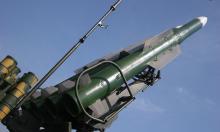Price of Gold Reaches $1000
Gold reached the highest price since March 2008, passing $1,000 an ounce. In the meantime, silver climbed to a 13-month high as a weaker dollar and fear of inflation boosted the appeal of precious metals.
Bullion for immediate delivery surged to $1,007.70 in London, taking this year’s increase to 14 percent. Gold, which reached a record $1,032.70 in March 2008, is set for a ninth yearly gain. Crude-oil futures and all six industrial metals on the London Metal Exchange rallied as the Dollar Index lost as much as 0.8 percent. Raw materials typically move inversely to the U.S. currency.
Governments have cut interest rates and boosted spending to fight the worst recession since World War II, spurring investors to buy bullion as a hedge against potential inflation and debasement of currencies. Gold, silver and palladium holdings in exchange-traded funds have advanced to records, Bloomberg reports.
Some investors were also seeing gold as a caveat to stock market bullishness as they fret about the result of central banks and governments pumping billions of dollars into banking systems to boost growth.
U.S. gold futures for December delivery rose to $1,009.4 an ounce, before easing to $1,005.4 an ounce versus Friday's $996.70 an ounce.
The New York Times quoted Walter de Wet, an analyst at Standard Bank as saying, "The dollar is weaker, but I would put this move mainly behind technical momentum. Everyone has been expecting this massive move from a technical perspective."
It was also reported, jewelry accounts for about 70% of gold demand, according to the World Gold Council, and India is the world's largest jewelry market by volume. When gold hit an all-time high 18 months ago, the knock-on effect on prices was swift as consumers voted with their feet.
"A feature of Indian demand is its extreme sensitivity to price volatility - this is the country where that factor is of most importance in affecting gold demand," the World Gold Council said.
Other factors are nonetheless supportive for gold, in particular the ailing dollar. Gold acts as an inflation and currency hedge, meaning it is often bought in times of dollar weakness and sold in times of dollar strength.
But UBS analyst John Reade remains "unconvinced that all the ingredients are in place for a sustained surge higher in gold." According to Reade, most good buying opportunities in gold over the last few years have been marked by strong jewelry demand that had followed a period of speculative long liquidation.
Right now, however, coin and physical investment buying remains sluggish, he said, while "the best that can be said about exchange-traded fund flows is that outflows have ceased and the modest buying is taking place - far from the surge higher this year."
"This leaves Comex and the over-the-counter market as the buyers of gold...Only if we see much stronger and more broad-based buying in gold will we change our view that this is a profit-taking opportunity rather than a signal to buy gold," Reade said, the Wall Street Journal reports.
Subscribe to Pravda.Ru Telegram channel, Facebook, RSS!



